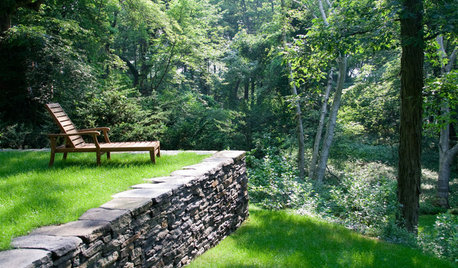help for a lawn newbie
User
11 years ago
Related Stories

GARDENING GUIDES8 Unthirsty Plants Help You Save Water in Style
Spend less effort and money on your landscape with drought-tolerant and native plants that liven up your yard
Full Story
EARTH DAYThe Case for Losing the Traditional Lawn
Work less, help the environment and foster connections by just saying no to typical turf
Full Story
GARDENING GUIDESHow to Plant a New Lawn From Sod
Take the quick-start route to turf with sod; these installation guidelines will help ensure a healthy and long-lasting lawn
Full Story
LANDSCAPE DESIGNHow to Help Your Home Fit Into the Landscape
Use color, texture and shape to create a smooth transition from home to garden
Full Story
LANDSCAPE DESIGNWhat the Heck Is a Ha-Ha, and How Can It Help Your Garden?
Take cues from a historical garden feature to create security and borders without compromising a view
Full Story
ORGANIZINGDo It for the Kids! A Few Routines Help a Home Run More Smoothly
Not a Naturally Organized person? These tips can help you tackle the onslaught of papers, meals, laundry — and even help you find your keys
Full Story
ARCHITECTUREHouse-Hunting Help: If You Could Pick Your Home Style ...
Love an open layout? Steer clear of Victorians. Hate stairs? Sidle up to a ranch. Whatever home you're looking for, this guide can help
Full Story
PETS6 Ways to Help Your Dog and Landscape Play Nicely Together
Keep your prized plantings intact and your dog happy too, with this wisdom from an expert gardener and dog guardian
Full Story
STANDARD MEASUREMENTSThe Right Dimensions for Your Porch
Depth, width, proportion and detailing all contribute to the comfort and functionality of this transitional space
Full Story







grass1950
UserOriginal Author
Related Professionals
Glen Ellyn Landscape Architects & Landscape Designers · Pelham Landscape Contractors · Waterbury Landscape Contractors · Alamo Landscape Contractors · Bainbridge Island Landscape Contractors · Hayden Landscape Contractors · Melrose Landscape Contractors · North Richland Hills Landscape Contractors · Paramount Landscape Contractors · Post Falls Landscape Contractors · Snoqualmie Landscape Contractors · Streamwood Landscape Contractors · Twin Falls Landscape Contractors · Weslaco Landscape Contractors · Hawaiian Gardens Landscape ContractorsUserOriginal Author
grass1950
grass1950
Ethanhh
UserOriginal Author
dchall_san_antonio
UserOriginal Author